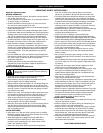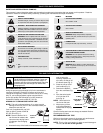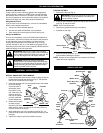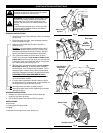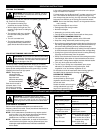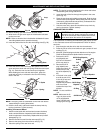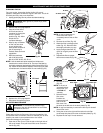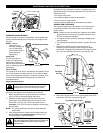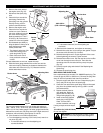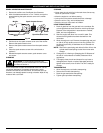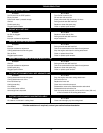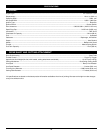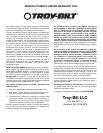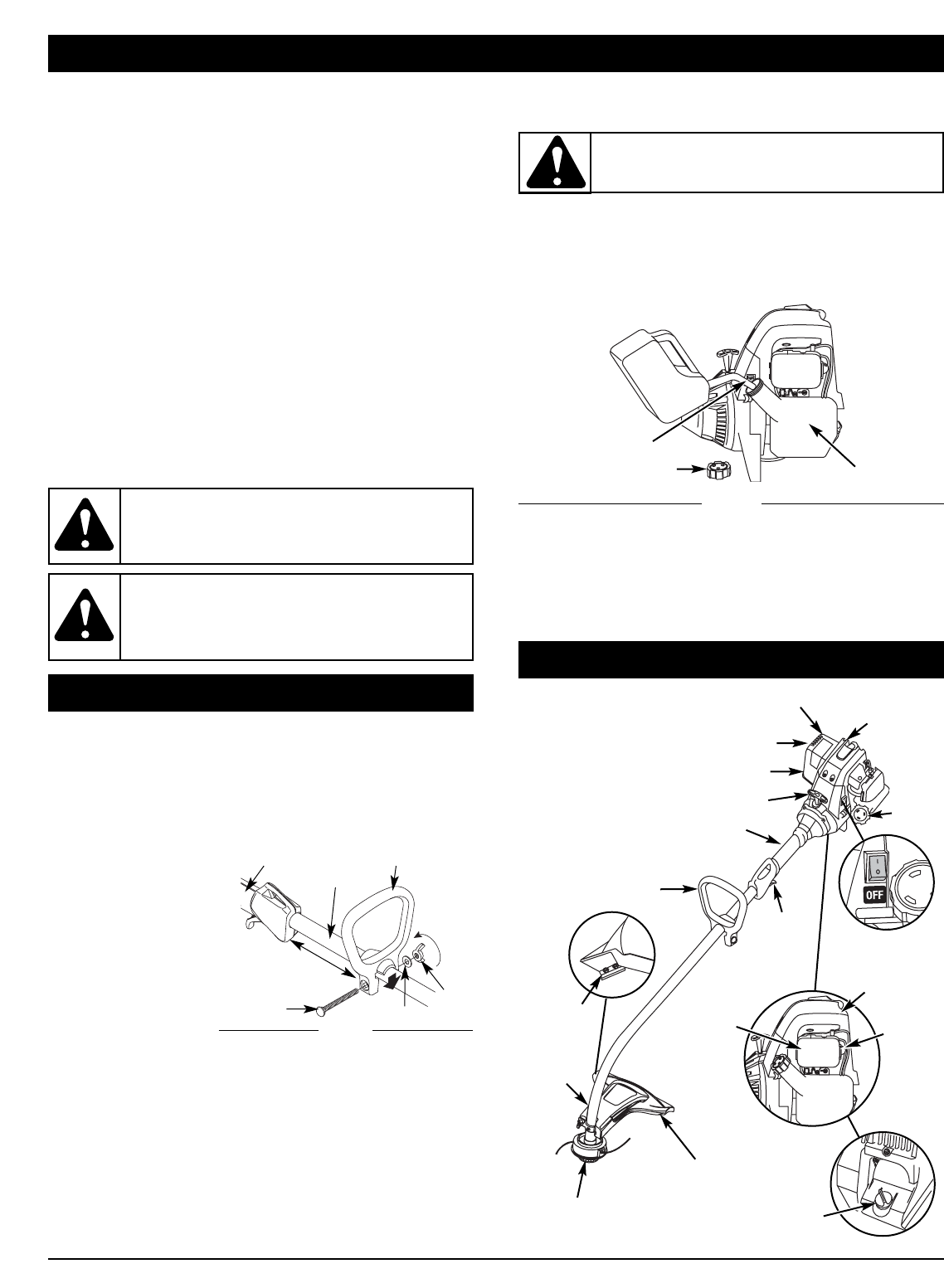
4
Cutting Attachment
Shield
Fuel
Cap
Throttle
Control
D-Handle
Cutting
Attachment
Shaft Grip
Primer
Bulb
Oil Fill Plug / Dipstick
Spark
Plug
Shaft
Starter Rope Grip
Line
Cutting
Blade
Spark
Plug
Muffler
Muffler Guard
Spark Arrestor
On/Off Stop
Control
KNOW YOUR UNIT
Air Filter
Cover
OIL AND FUEL INFORMATION
ASSEMBLY INSTRUCTIONS
INSTALL AND ADJUST THE D-HANDLE
1. Push the D-handle down onto the shaft housing so that the
handle slants towards the shaft grip (Fig. 5). The squared
bolt hole in the handle is to the right.
2. Insert the shoulder bolt into the squared hole in the handle
and push through.
On the left side of
the handle, place
the washer on the
bolt, then screw the
wing nut onto the
bolt. Do not tighten
until you make the
handle adjustment.
3. Rotate the D-handle
to place the grip
above the top of the
shaft housing. Place it a minimum of 6 inches (15.24 cm)
from the end of the shaft grip.
4. While holding the unit in the operating position (Fig. 10),
position the D-handle to the location that provides you the
best grip.
5. Tighten the wing nut until the D-handle is secure.
Fig. 5
Bolt
Washer
Wing
Nut
Tighten
Shaft
Grip
D-Handle
Minimum
6 inches
(15.24 cm)
Shaft
Housing
Definition of Blended Fuels
Today's fuels are often a blend of gasoline and oxygenates
such as ethanol, methanol or MTBE (ether). Alcohol-blended
fuel absorbs water. As little as 1% water in the fuel can make
fuel and oil separate or form acids when stored. Use fresh fuel
(less than 60 days old), when using alcohol-blended fuel.
Using Blended Fuels
If you choose to use a blended fuel, or its use is unavoidable,
follow recommended precautions:
• Always use fresh unleaded gasoline
• Use the fuel additive STA-BIL
®
or an equivalent
• Drain tank and run the engine dry before storing unit
Using Fuel Additives
The use of fuel additives, such as STA-BIL
®
Gas Stabilizer or
an equivalent, will inhibit corrosion and minimize the formation
of gum deposits. Using a fuel additive can keep fuel from
forming harmful deposits in the carburetor for up to six (6)
months. Add 0.8 oz. (23 ml.) of fuel additive per gallon of fuel
according to the instructions on the container. NEVER add fuel
additives directly to the unit's gas tank.
FUELING THE UNIT
1. Remove the fuel cap (Fig. 4).
2. Place the gas container’s spout into the fill hole on the fuel
tank (Fig. 4) and fill the tank.
NOTE: Do not overfill the tank.
3. Wipe up any gasoline that may have spilled.
4. Reinstall the fuel cap.
5. Move the unit at least 30 ft. (9.1 m) from the fueling source
and site before starting the engine.
NOTE: Dispose of the old gasoline in accordance to Federal,
State and Local regulations.
WARNING: Add fuel in a clean, well ventilated
outdoor area. Wipe up any spilled fuel immediately.
Avoid creating a source of ignition for spilt fuel. Do
not start the engine until fuel vapors dissipate.
WARNING: Gasoline is extremely flammable.
Ignited vapors may explode. Always stop the engine
and allow it to cool before filling the fuel tank. Do not
smoke while filling the tank. Keep sparks and open
flames at a distance from the area.
WARNING:
Remove fuel cap slowly to avoid injury
from fuel spray. Never operate the unit without the
fuel cap securely in place
.
Fig. 4
Fuel Cap
Fuel Tank
Gas Can Spout
Unleaded
Gasoline




